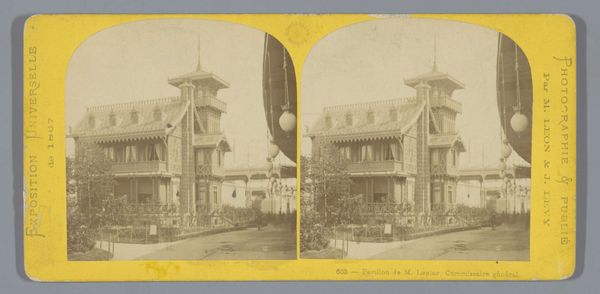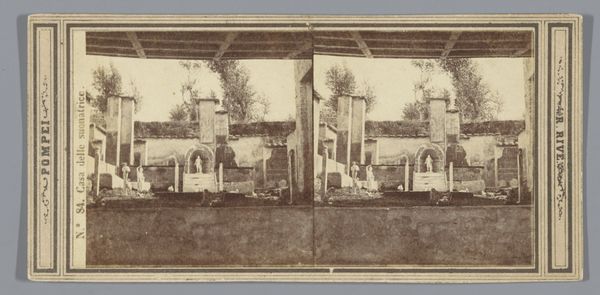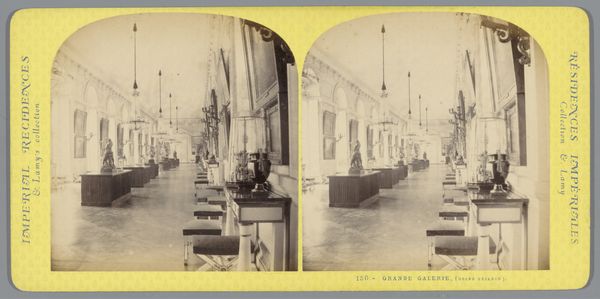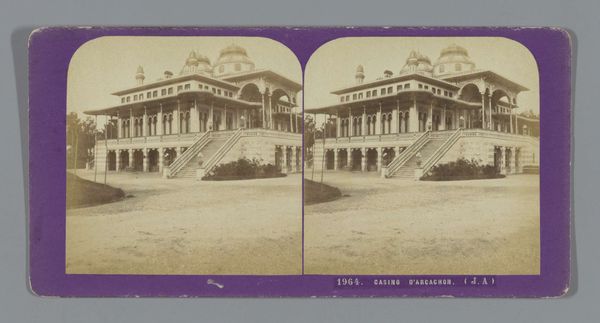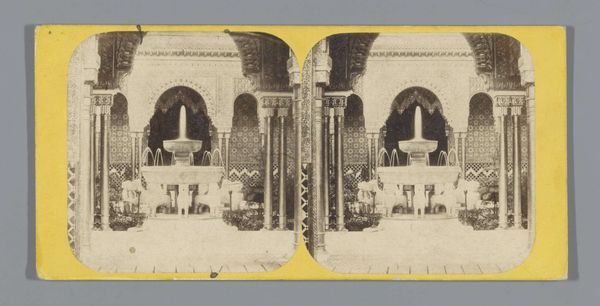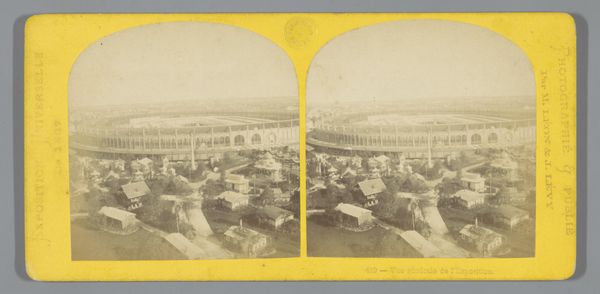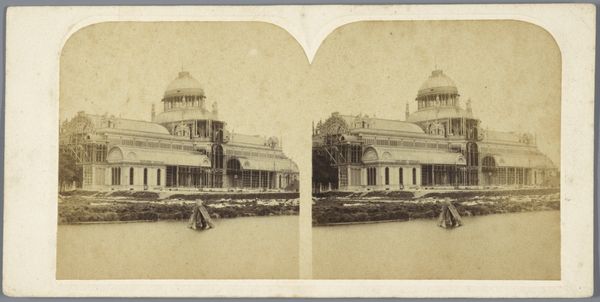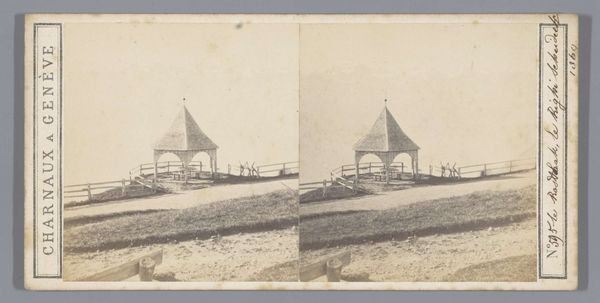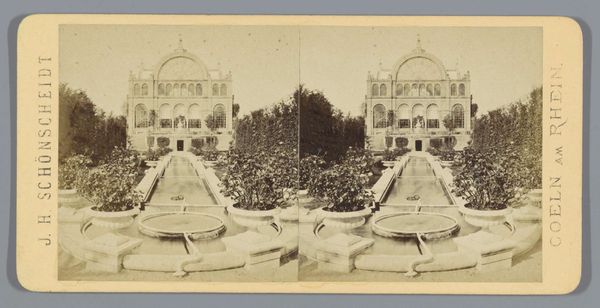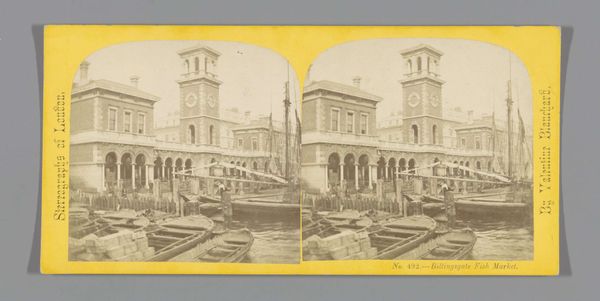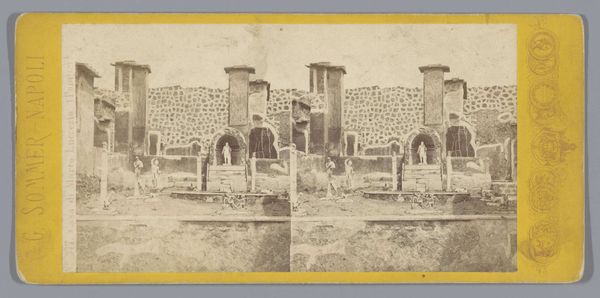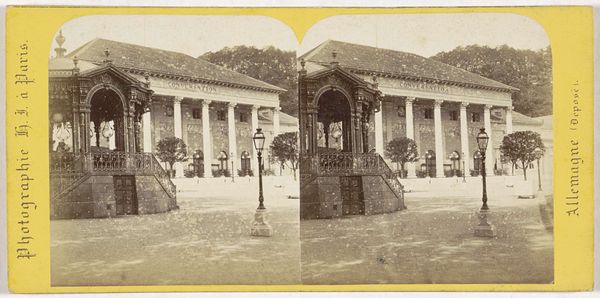
photography, albumen-print, architecture
#
landscape
#
photography
#
coloured pencil
#
ancient-mediterranean
#
islamic-art
#
albumen-print
#
architecture
Dimensions: height 85 mm, width 170 mm
Copyright: Rijks Museum: Open Domain
Curator: What strikes me immediately is the symmetry and repetition in this image – the almost rhythmic quality created by the arches and pillars. Editor: Indeed. We're looking at an albumen print, dating from between 1872 and 1876, that captures the "Leeuwenhof" or Court of the Lions within the Alhambra in Granada. The photographer was Jean Andrieu. Curator: Ah, the famous fountain supported by those stylized lions! It feels very staged. Almost like a theatrical set. What role does the animal play in that setting? Editor: In this image, the lions—the symbolic heart of the court—take center stage. The composition reveals a shift in how architecture and ancient monuments were disseminated in the late 19th century through these photographic prints aimed at capturing an Islamic ideal. The presence of those lions blends Islamic imagery with ancient symbolism and invites a host of questions about cultural appropriation in postcolonial Europe. Curator: So, this image wasn’t just about documenting a place, but also shaping ideas? You see a confluence of ancient, Islamic, and modern symbols shaping a public role? Editor: Precisely. This photograph flattens three-dimensional space into a easily reproducible image. The albumen print helped cultivate a broader, European understanding of the Alhambra, thus transforming it from a former palace into a cultural symbol appropriated to boost tourism or buttress claims about some civilizational essence in Europe. The distribution of images, like this one, reveals cultural negotiations over time. Curator: Thinking about that cultural memory and continuity… Even today, the Alhambra is strongly associated with Islamic architecture in the public imagination. The photo seems to anticipate, almost manufacture, that association through sharp composition. But who exactly was Andrieu targeting in that manufacture? Editor: Primarily, I suspect it targeted upper-middle class Europeans and Americans interested in travel, ancient monuments, and art, framing that complex historical narrative through a deliberately constructed image. The photograph could be purchased to affirm someone's travels, serve as educational tool, or accrue status. Curator: That certainly gives me a fresh view of it. I initially just saw a quaint, historic scene. Editor: Exactly—and that's the beauty of looking at such images through multiple perspectives. They hold so much more than initially meets the eye.
Comments
No comments
Be the first to comment and join the conversation on the ultimate creative platform.
